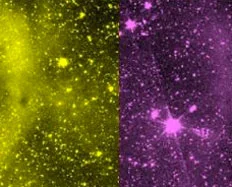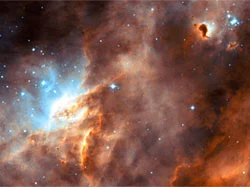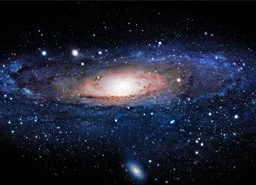
2002
Page 1 - results 1 to 10

When Uranus looks like Saturn...
This picture shows the system of Uranus observed in the near-infrared (Ks band at 2.2 microns) with the ISAAC instrument at the UT1 (ANTU), on November 19,...

The outer parts of accretion discs in active galaxies unveiled
Quasars and active galactic nuclei (AGN) are likely powered by matter accretion onto a super-massive black hole located at their center. Before being...

Martian paleoclimates
On Earth, the coring of the ice polar caps allowed to recover the signature of the climate evolution over more than 400 000 years with great precision,...

A rose blooming in space
Resembling a delicate rose floating in space, the nebula N11A is seen in a new light in a
true-colour image taken by the NASA/ESA Hubble Space Telescope....
A bath of youth for galaxies
Solar neutrinos: are observations and model predictions reconciled at last?
The core of the Sun is the locus of thermo-nuclear reactions, which produce electron neutrinos e. Those should theoretically hit the Earth at a rate of 65...

Massive Infant Stars Rock Their Cradle
Extremely intense radiation from newly born, ultra-bright stars has blown a glowing spherical bubble in the nebula N83B. A new NASA/ESA Hubble Space...
The Odin satellite detects H218O in comet C/2002 C1 (Ikeya-Zhang)

Detection of triply deuterated ammonia: the first triply deuterated molecule in the interstellar medium
For the first time, a molecule in which hydrogen is substituted by deuterium 3 times, has been discovered in the interstellar medium, by an international...

The lithium observed in old stars has a uniform abundance: is this the lithium of the Big-Bang?
Lithium is one of the elements (with deuterium) formed primarily during the primordial nucleosynthesis, a few minutes after the Big-Bang. Its abundance thus...